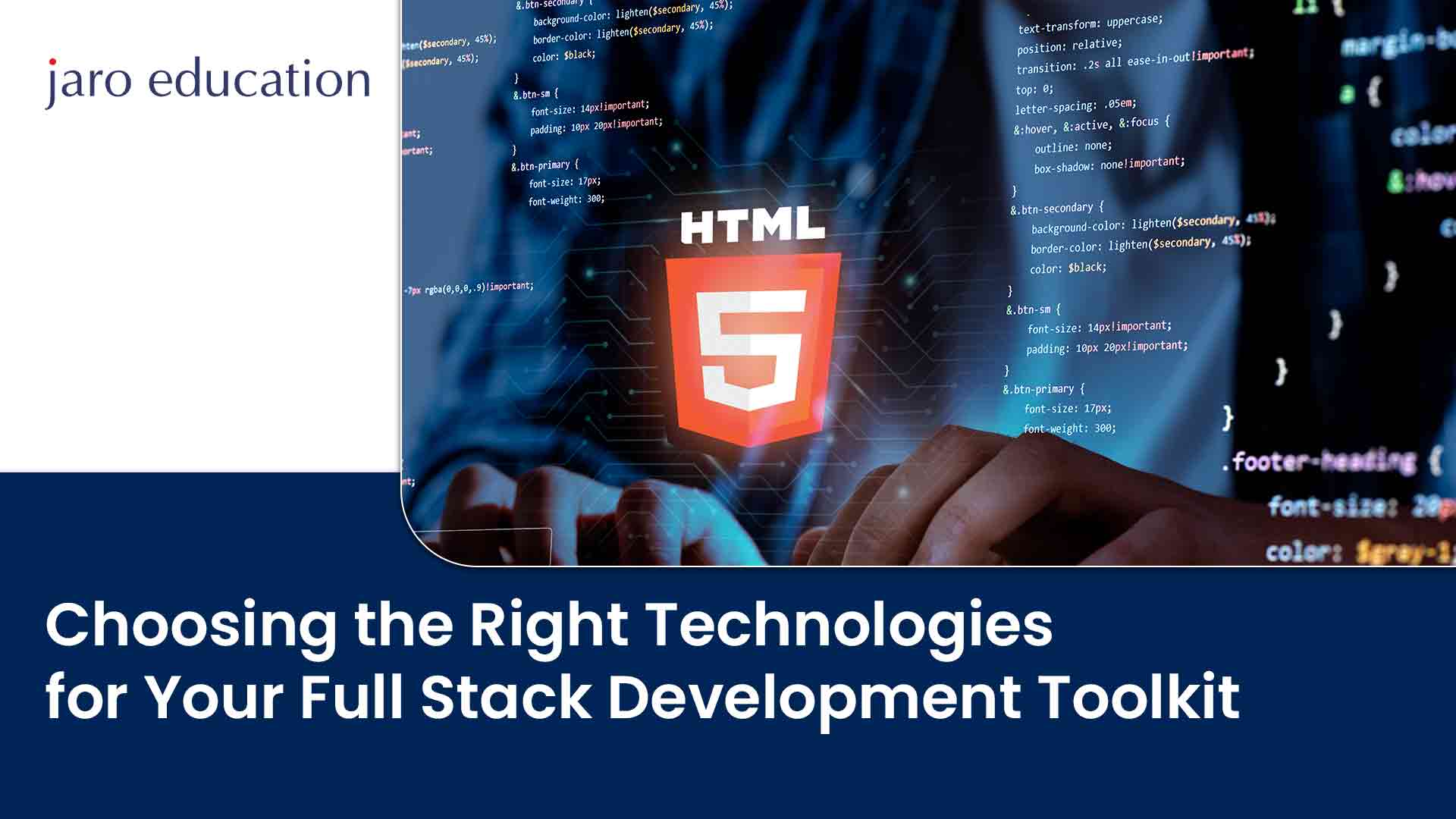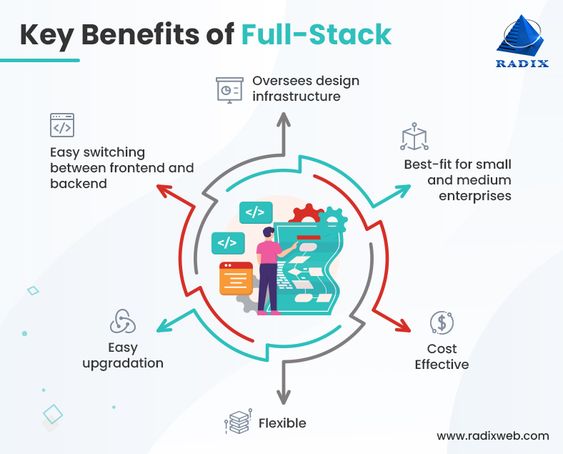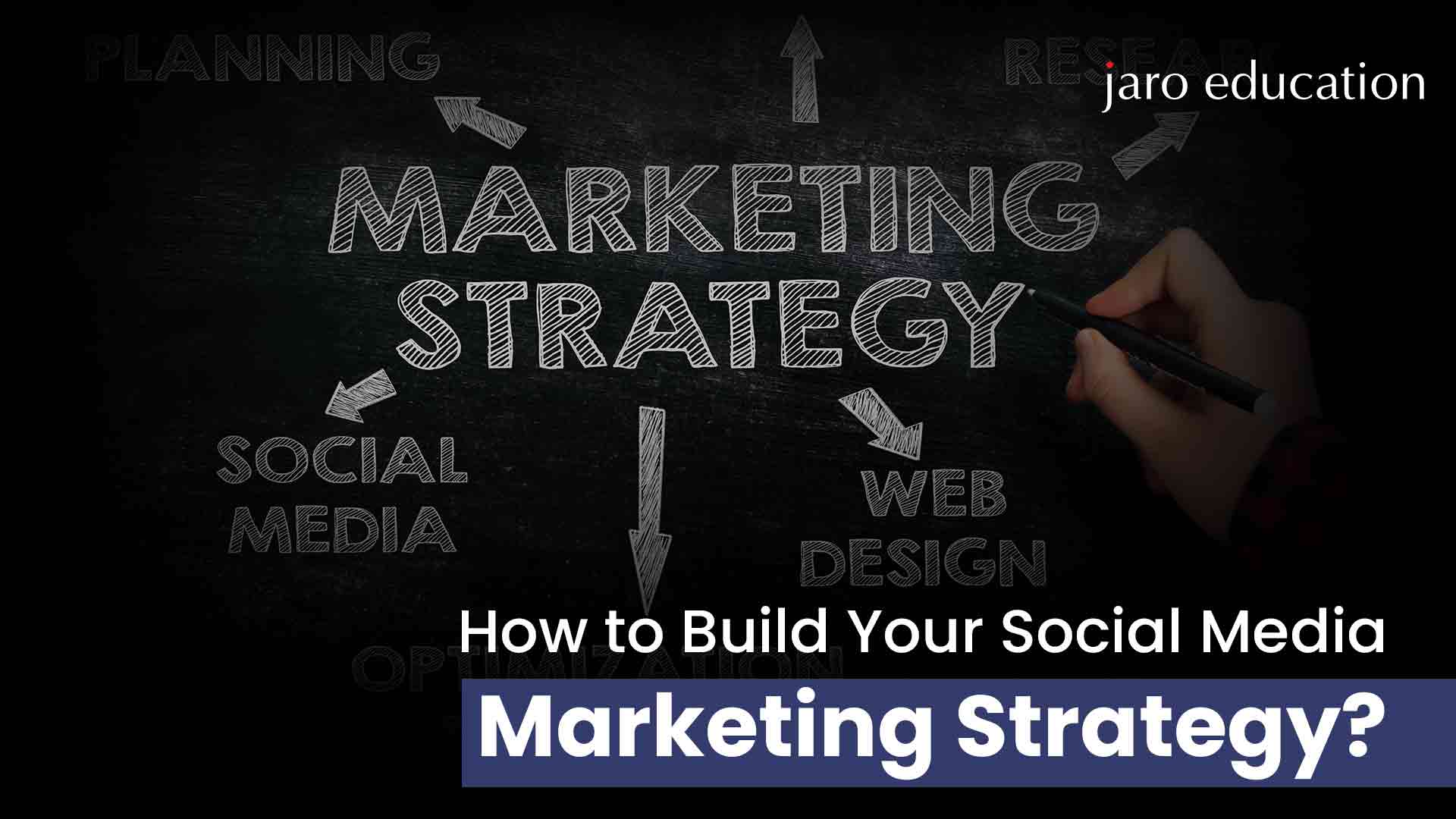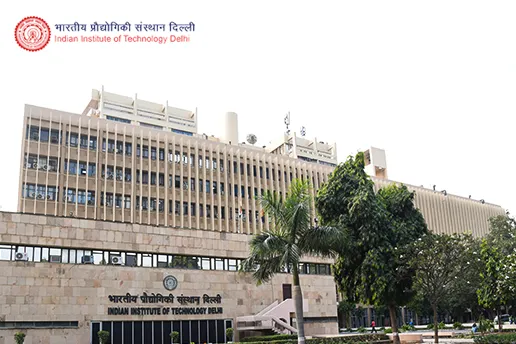
- jaro education
- 8, May 2024
- 12:25 pm
Full stack development is a dynamic and complex approach to software engineering, including both the front-end and back-end components of developing online applications. Full stack developers, as their name implies, are experts in every aspect of the technological stack, from client-side languages and UI design to server-side programming and databases. Their comprehensive knowledge enables them to easily move between different web application levels, further guaranteeing optimal functionality, performance, and user experience. Full stack development has become a sought-after skill set in the constantly changing digital market, enabling developers to build dynamic and reliable online solutions that satisfy the needs of both consumers and modern companies.
Benefits of Full Stack Development
The ability to handle both the front-end and back-end parts of web applications is what makes full-stack development so important in today’s tech-driven environment. This broad skill set facilitates effective teamwork, optimizes development procedures, and the production of integrated. Here are some of the benefits that are related to full-stack development:

Table of Contents
- Full-stack software developers can provide a complete solution by considering the overall design structure. Instead of approaching problems from a solitary perspective, they provide a solution that functions effectively on both the front and back ends.
- The special capacity of a full-stack developer to manage frontend and backend development concurrently boosts output, ultimately resulting in on-time product delivery. Since full-stack developers don’t need any extra dependencies, they can produce products quickly and efficiently.
- Any problems with the database architecture, front end, or back end are efficiently handled by a full-stack developer. They possess the necessary skill set to swiftly and effectively address bugs and challenging programming issues. They can also handle continuing maintenance for apps that are already in use.
- The newest technologies are constantly kept up to date by a proficient full-stack web developer. Through self-updating, they are capable of developing dynamic, mobile-responsive websites with clever features.
- Any project can be handled entirely by one knowledgeable full-stack developer, saving the trouble of an entrepreneur hiring several developers for each part of the project. A full-stack developer can easily handle any type of web project.
Importance of Full-Stack Developer in an Organisation
In the industry of Computer Systems Design & Related Services, the back-end developers manage the server-side functionality of a web application. They write the server-side programming and database interactions that make up the background logic. To develop the back end of the application, they utilize various software, including Python, Ruby on Rails, and many more.
On the other hand, web applications’ user interfaces are created by front-end developers. The front-end development of a web design includes all elements that the user sees and interacts with, such as menus, forms, and buttons. For creating the application, front-end developers use various computer languages, such as HTML, Javascript, and many more.
In this scenario, a business organization hires a full-stack developer who is skilled in both front-end and back-end programming and can work on the server-side logic and user interface of a web application.
Skills Required by a Full Stack Developer
Proficiency in front-end and back-end technologies, along with strong problem-solving skills and great communication talents, are critical for obtaining success as a professional full-stack developer. Here are some of the skills that are essential to a full-stack developer:
- To guarantee the effectiveness, integrity, and performance of applications, a full-stack developer must possess the required knowledge of database administration. They must be proficient at creating strong database structures, writing efficient queries, and maximizing database performance, all of which contribute to the smooth storage and retrieval of data. Additionally, to preserve the data integrity and improve speed, a full-stack developer must obtain mastery of database normalization along with data modeling techniques.
- A full-stack developer must have immense knowledge of various front-end user interfaces along with multiple frameworks to boost efficiency while developing a product.
- You must possess a diverse skill set necessary for locating and fixing problems across the board in the technological stack. They apply their excellent problem-solving skills to address a variety of issues, from complex back-end server failures to front-end UI flaws, guaranteeing seamless program operation.
- A full-stack developer must have basic knowledge of back-end programming languages, which includes Python, Java, and more. Moreover, he/she must have proficient knowledge of the framework that is applied in the back-end side of the web application.
- You must be proficient in communicating complex problems among your team members as a full-stack developer. In addition to discussing the problem, a full-stack developer should hold a brainstorming session with the remaining team members to discuss the technical difficulties and objectives of the project.
Tools Used by a Full-Stack Developer
To develop a certain web application or create a web design, a full-stack developer must use certain tools and technologies. Here is the list of various full-stack developer tools that a full-stack developer utilizes:
Databases
In this digital age, data management efficiency is essential. The efficient processing and storage of data, as well as the retrieval and administration of information, are essential to business operations and decision-making processes. This efficient management of data has been made possible by databases and database management systems (DBMS).
Front-end Frameworks
Front-end frameworks and libraries enable full-stack developers to quickly create engaging and responsive user interfaces. Using frameworks such as React, Angular, and many more, full-stack developers can quickly construct dynamic websites that easily provide outstanding user experiences.
Performance Monitoring Tools
Tools for documenting errors, reviewing logs, and keeping an eye on performance make monitoring and debugging apps easier. These fundamental instruments provide the best possible application health and enable prompt resolution of any problems that may occur.
Back-end Frameworks
Back-end frameworks serve as the cornerstone for creating dependable and scalable server-side applications. They let programmers effectively manage requests, handle data, and guarantee the dependable and scalable operation of web applications.
How Do You Select the Right Technology for the Full-stack Development Toolkit?
Building reliable and scalable apps requires careful consideration of the technologies. Let us take a look at the detailed guide to understand the selection of the proper technology for the full-stack developer tools:
- The first step begins with fully comprehending the goals, parameters, and technical specifications of the project. In this stage, a full-stack developer must consider certain factors like the application type (desktop, mobile, or online), anticipated user traffic, scalability requirements, and financial limitations.
- After completing the first step, the second step involves evaluating several front-end technologies, frameworks, and libraries while taking into account other variables such as community support, performance, simplicity of use, and suitability for the project.
- In the third step, a full-stack developer must carefully evaluate the front-end technologies and framework along with several other frameworks and back-end technologies that are appropriate for the project.
- The fourth step requires careful selection of the best available data storage solutions right after completing the evaluation of the technologies and framework.
- In the fifth step, a full-stack developer must carefully investigate other frameworks, libraries, and tools that go well with the front-end as well as the back-end technologies.
- The sixth step is one of the most crucial steps as it involves careful examination of whether the technology that has been selected for the creation of the specific project can accommodate the application’s future expansion and scalability in the future. A full-stack developer must also ascertain that the selected front-end and back-end technologies are compatible with each other to create a unified tech stack.
- In the seventh step, the full-stack developer must consider the security of the project to be of the highest importance and accordingly must conduct a thorough examination of the security features. Certain practices must be recommended to verify whether the selected technologies can guard against common security risks like SQL injection, cross-site scripting (XSS), and authentication flaws. Hence it is the responsibility of a full-stack developer to select devices that offer strong security measures and vibrant community support while maintaining timely security upgrades.
- Teamwork is important while creating a web application or designing a unique web design. Hence, in the eighth step, a full-stack developer must select certain technologies while taking into account the current skill set and experience of the development team in an organization. If there is any type of skill shortage, then the entrepreneur can either invest in training and upskilling the present employees or select technologies that play to the team’s strengths and preferences.
- The last step involves getting feedback about the project as it helps the developers to identify the flaws and work accordingly to create a better version of the project. The feedback should be received from experienced developers who are equipped with the necessary skills along with years of experience.
- Hence, the creation of a successful project lies in the selection of the appropriate technology that perfectly aligns with the objective and goals of the project. By thoroughly following the above steps, an individual can select the appropriate technologies for full-stack development tools.
Conclusion
To sum up, full stack development is a comprehensive and adaptable software engineering method that enables programmers to effectively handle both the front-end and back-end facets of creating web applications. Hence, any individual pursuing a career in full-stack development has a bright future, especially in the IT industry. Full-stack developers are essential to developing dependable, scalable, and user-focused digital solutions because of their proficiency with a broad range of technologies and frameworks. In the rapidly changing world of technology, full-stack developers foster creativity, flexibility, and efficiency by valuing lifelong learning, teamwork, and problem-solving. A full-stack developer plays an increasingly important role in meeting the needs of modern consumers and organizations by providing seamless and impactful software solutions, especially as enterprises depend more and more on linked digital platforms.
As technology continues to evolve, there will be an increased demand for professional full-stack developers in an organization. Hence, this would be a perfect time to learn more about full-stack development. If you are one of those interested candidates, then you should join the Executive Programme in Full Stack Web Development provided by IITM Pravartak Technology Innovation Hub of IIT Madras. This extensive course is intended for both seasoned professionals and aspiring developers while providing a rare chance to learn the art and science of full-stack development under the direction of renowned faculty and industry experts from the esteemed Indian Institute of Technology Madras (IITM). You’ll get practical experience in creating real-world web applications from scratch. The curriculum has been painstakingly designed to cover the newest tools, technologies, and best practices in front-end and back-end development.








